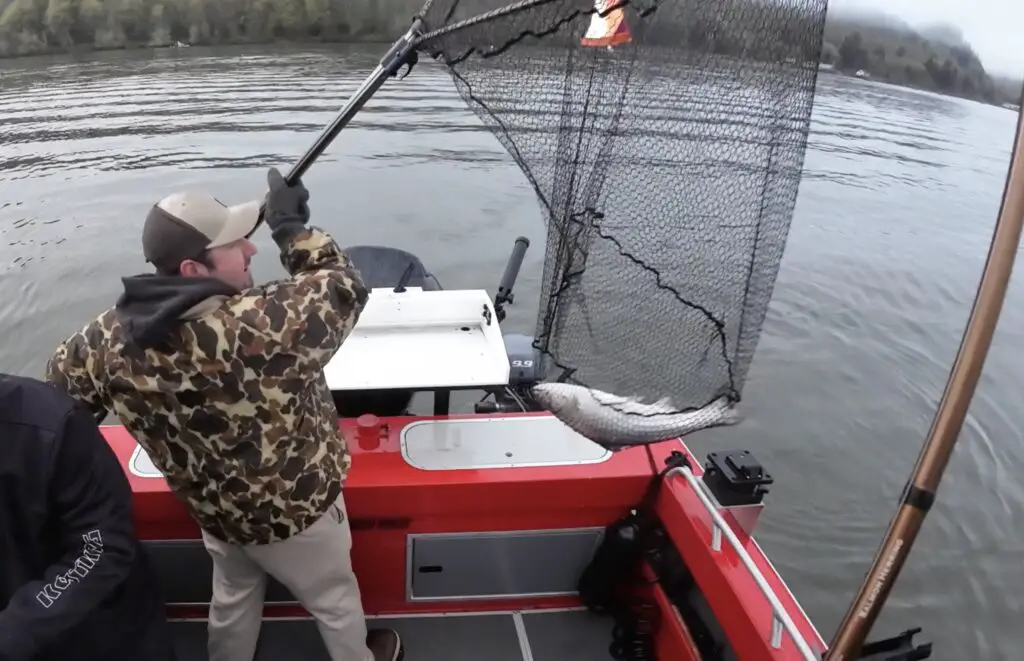
Fishing for springers on the Columbia River is best described as “grinding” since the bites are often so few and far between. Our season in 2024 was definitely defined by the word grind, however it also made us better spring chinook anglers and this blog post will outline why that is.
First of all there are a few resources you should check out if you’re somewhat new to this blog or to springer fishing in general.
I’ve written quite a bit about fishing for springers on the Columbia River here. You should also check out the video I made on the topic below:
I’ve written this blog post in a question and answer format to try and structure the topics I want to cover but first I want to address the main point: Persistence is the most important dynamic in springer fishing on the Columbia River.
The reality of this fishery is that it opens with very few spring chinook in the river and none heading over the dams.
Springer anglers are the most die-hard of die-hards though often fishing through terrible weather for very few fish, trying to get that one bite.
As the run strengthens and a few spring chinook begin to show up in dam counts, a few fish start to be caught in the lower river. For most, that’s the area around Cathlamet, WA.
Because so many people target spring chinook and because there are ESA-listed components of the run headed for the upper reaches of the Columbia River watershed, the fishery almost always closes down in early April.
Keep in mind, the run has BARELY even begun in early April.
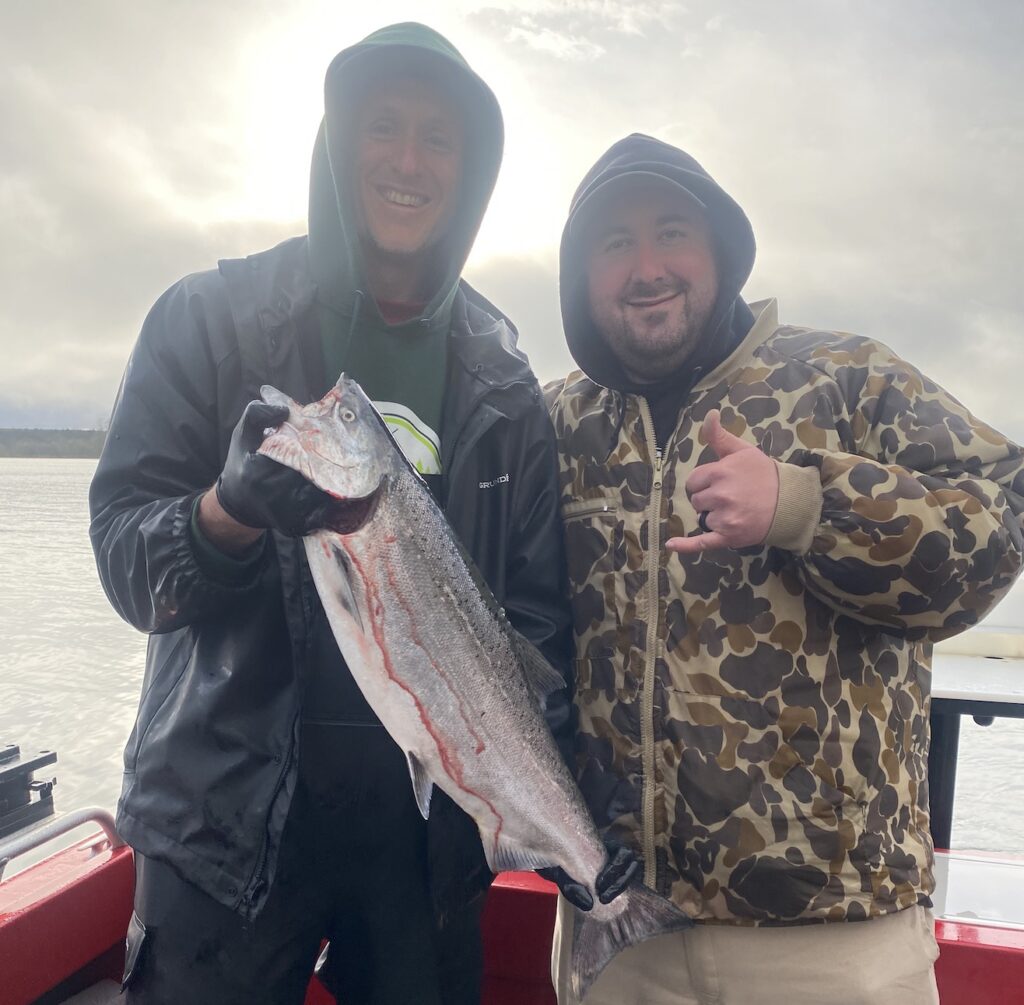
And yet you will find hundreds of boats up and down the Columbia River grinding for that one or two bites that will make their trip.
When WDFW compiled the early numbers of angler trips and fish caught they estimated that it took 23 angler trips to result in one kept spring chinook. Wow!
Thankfully, the river opened up for 6 additional days beyond the planned closure date to give us additional time on the water to catch our quota of spring chinook, but unlike previous years I’m not sure fishing ever got “hot”.
In 2023, those last few days before the closure resulted in boats with limits of fish for folks who really knew what they were doing and had a program that was dialed-in. That’s not quite how things played out in 2024, but that’s just sometimes how it goes with springer fishing.
Okay, let’s do some rapid fire Q&A on some Columbia River springer angling topics that we learned in our 2024 season:
Blue or green dyed cut-plug herring?
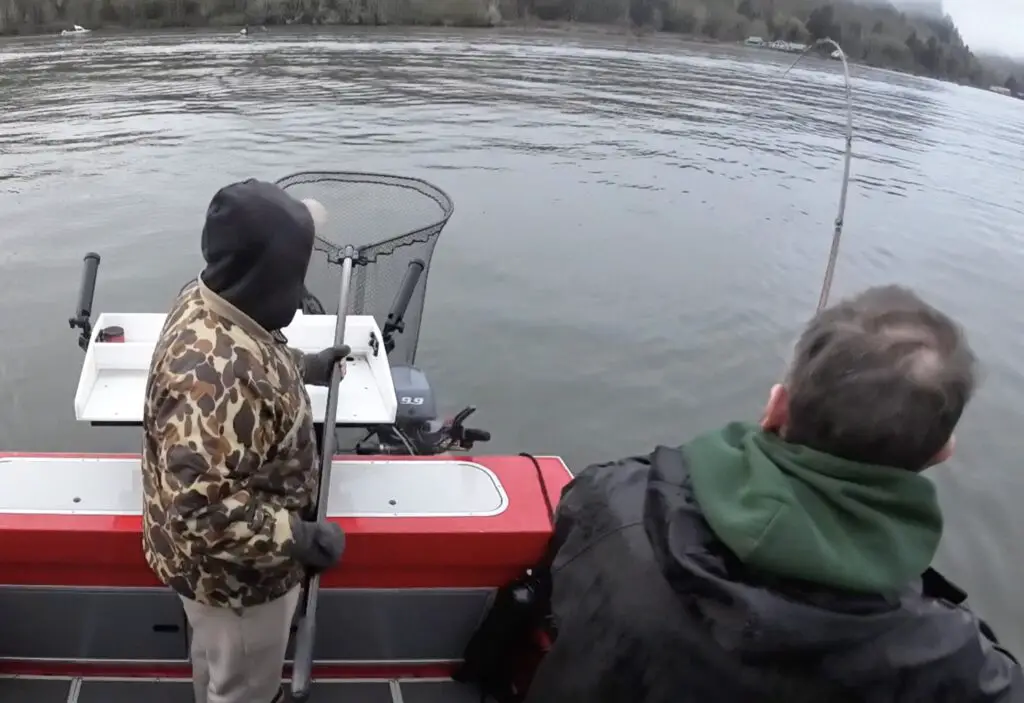
I’ve heard some guides say that they start with green-dyed herring when the water is colder and move to blue-dyed herring as it warms up. One of the things about the 2024 season is that the water temps were about 3-4 degrees warmer than the past few years during the same timeframe.
We got bit on both green and blue-dyed herring about equally as much in the same water temperatures. My approach is to fish with both somewhat equally to give the fish multiple options.
It can be challenging just to find and mark good numbers of fish on your electronics, but you still need to get those fish to bite. So why not present them multiple offerings in case they favor one more than the other?
Set the hook or let them eat the herring?
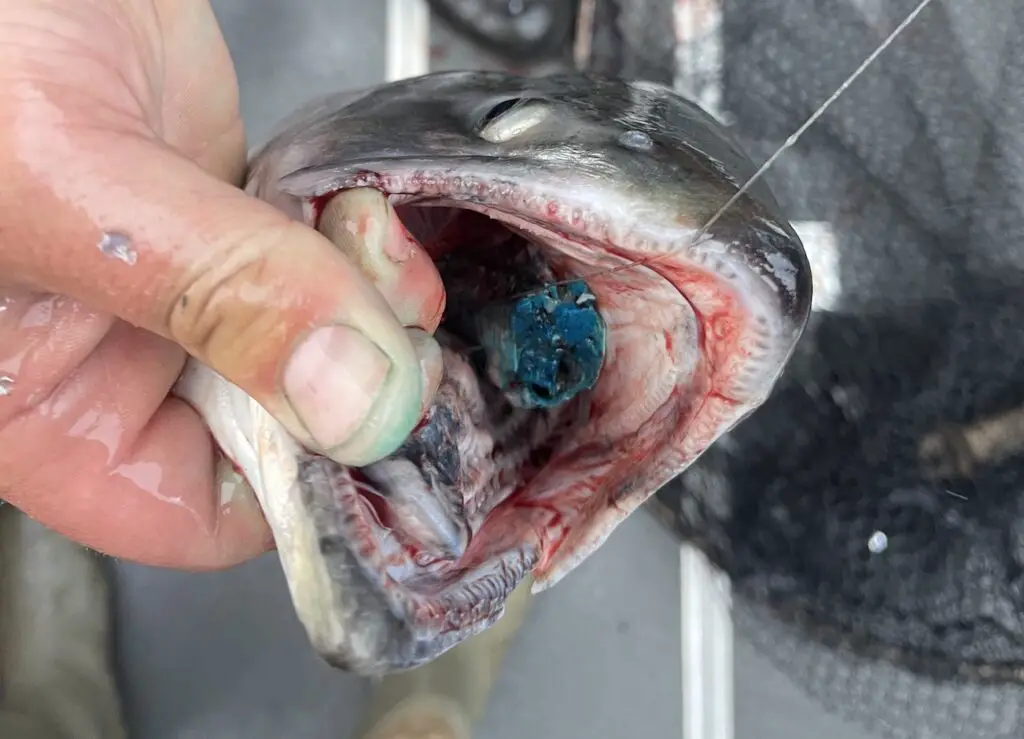
On the very first bite we experienced, my friend Connor shouted at me “Fish, fish, fish!” since I wasn’t looking at my rod. I immediately picked up the rod and the fish was gone.
He chastised me for picking up the rod mid-bite, but in my defense, normally we aren’t watching our rods so closely 100% of the time that we see the early-bite stage when the rod gets whacked a few times and the fish isn’t yet hooked.
And if you’re going to yell “Fish, fish, fish!” I’m normally going to assume that fish is hooked and peeling line. I will admit to being pretty eager as well, and next time I vowed to let them eat it. You can sometimes get it just right and hook that fish, but more often than not, trying to set the hook mid-bite will result in a complete whiff.
And that might be your only bite of the day, so don’t mess it up!
The next bite on my rod, I happened to see it from the very beginning and I just watched the fish come back, nail it again, and start peeling line before I picked up the rod and fought that fish to the boat. My reward? A solid 9 lb hatchery spring chinook in the box!
Troll in a straight line or zig-zag?
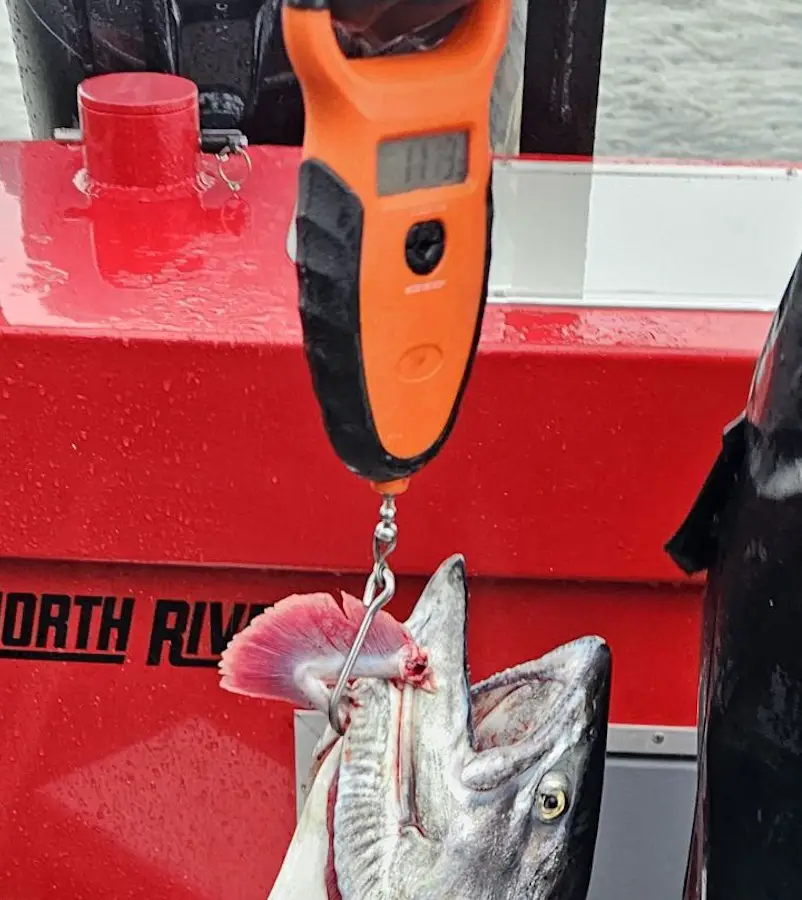
My North River Seahawk has a Garmin Reactor 40 Auto-pilot on the kicker motor and I love it! It’s like another person on my boat to help me drive and steer. One of the challenges though is that I can troll almost too perfectly in a straight line.
Yes, you can also program a zig-zag pattern, which is often quite helpful, but not always useful if you are fishing on a ledge or next to a terrace where changing your troll path will result in having to adjust your depth by 10-15 feet.
If you’re fishing in a place like Clifton Channel with a lot of similar depths, I would favor a zig-zag pattern. In fact, all of our bites there came while trolling perpendicular to the current instead of a straight line.
Do Spin Fish work on Columbia River spring chinook?
Yes! In 2023 this was a significant factor in putting more fish in the box, but not so much in 2024. We had a spin fish on one of our rods most of the time we were fishing and it didn’t get bit once for us…
So yeah, it’s something to try and rotate your rods through as you’re trying to figure out what they want, but don’t go all-in on using them without a bit of confirmation they prefer it to herring on that particular day.
Wrapping up our 2024 Columbia River spring chinook season
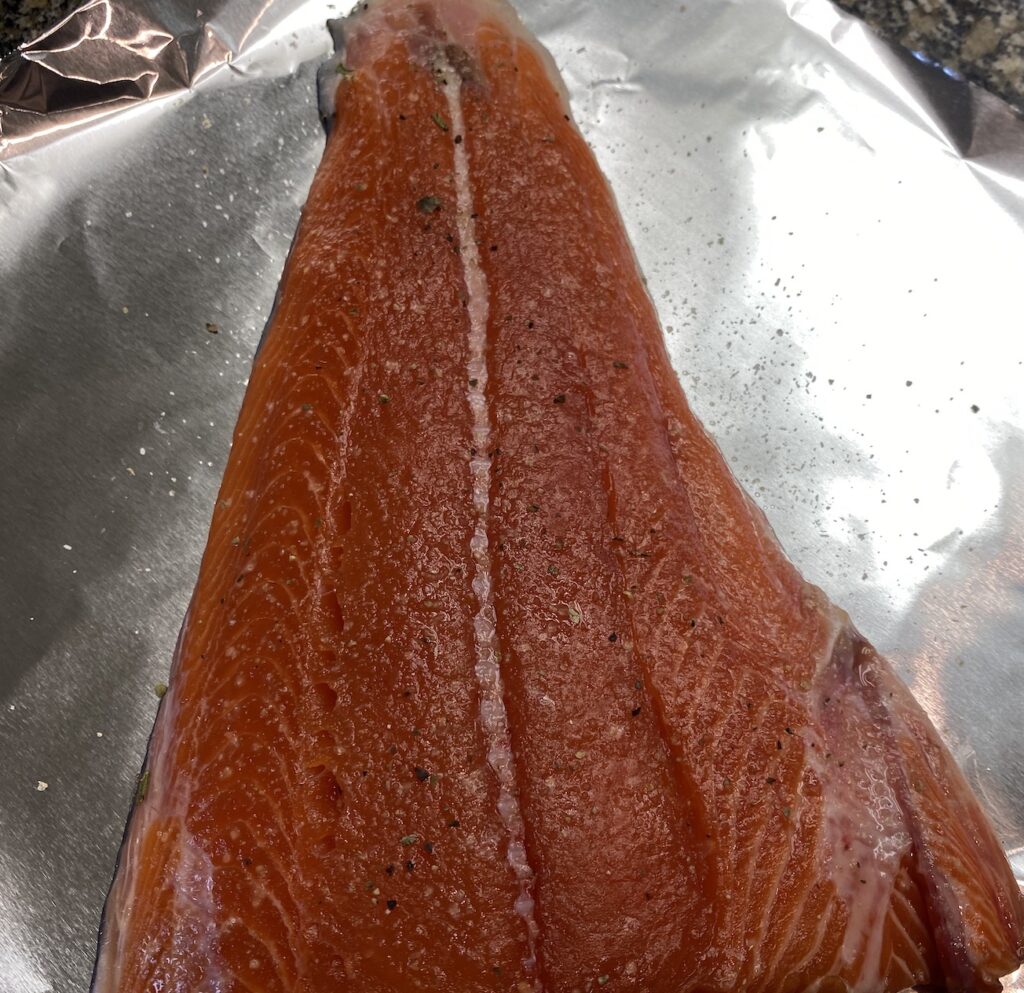
Last note here is that to really have success in this fishery, plan to troll 8-10 hours a day at least. You may get blown off the water when the wind kicks up in the afternoon unless you find a place to hide.
Grinding and persistence pay off, so plan to be as comfortable (as possible!) on the boat with plenty of hot beverages, food, or whatever you need to keep at it.
Who’s already looking forward to more torture in 2025?